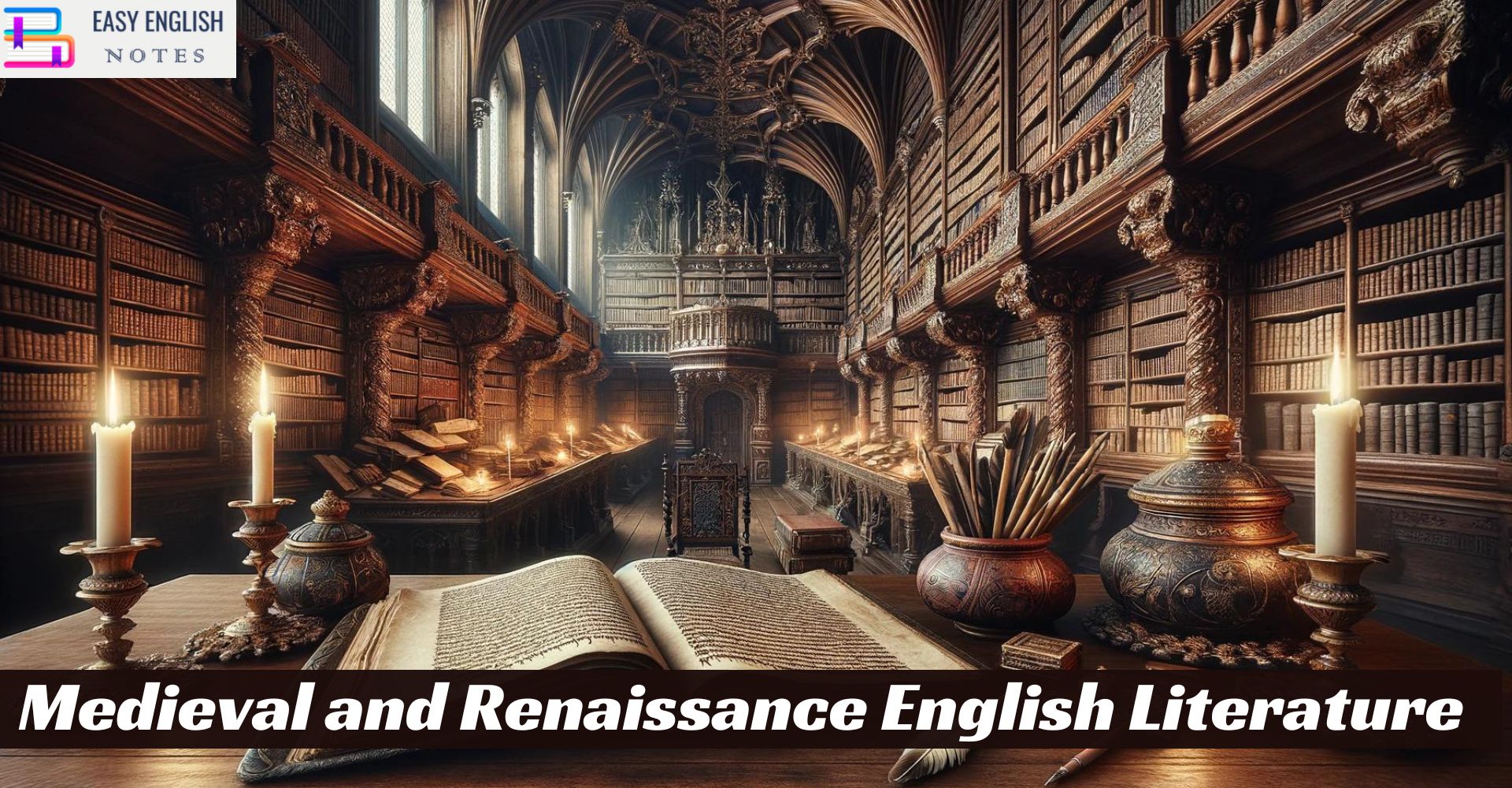The change over from the Medieval to the Renaissance in England represented a very radical change, not only in social and political establishments but also in the world of literature. The following article will describe differences and continuities between two essential epochs in themes, styles, and roles of literature in society.
1. Historical and Cultural Context
Medieval Period (c. 5th century to late 15th century): The Medieval period in England was an era of a tiered system of feudalism under the overpowering influence of the Church. The literature mainly focused on moralistic targets, aiming to instruct the readers in Christian value. Most written literature of the early and middle medieval periods was in Latin or Anglo-Norman French, with Old and then Middle English only gaining in prominence at later dates.
Renaissance Period (late 15th century to early 17th century): The Renaissance period signaled the rebirth of classical learning and a new accent of humanism focused on the possibility and achievement of an individual. It marked the entry of English into the literature vernacular domain with the invention of the printing press in the mid-15th century and democratization of learning.
2. Literary Themes and Content
Medieval Literature: Chivalry, divine order, and allegories of moral and spiritual values remained the dominant themes in Medieval literature. Works like Geoffrey Chaucer’s “The Canterbury Tales” give a sense of this place, this time, with its religious piety and down-to-earth attitudes. Morality plays, most importantly “Everyman,” made sharp use of the three allegorical characters for pointing its spectators towards moral rectitude: the theological virtues and vices.
Google Ads PPC Training Digital – membership area
An Exclusive Blood Sugar Balancing And Weight Loss
Renaissance Literature: In comparison, the renaissance literature was much more based on humanist philosophies and the rediscovery of classical texts. This period gave way to more secular themes, like individualism, the complexity of human nature, and the search for the physical and emotional landscapes of self. The material of William Shakespeare, such as “Hamlet” and “Romeo and Juliet,” are an example of a deep exploration of the individual’s characters, human emotion, and social commentary.
3. Literary Styles and Techniques
Medieval Literary Styles: Medieval literature was very often quite blunt in its style, with very clear and pointed narratives that had moral intent. Some of the more famous forms were the alliterative verse in “Beowulf” or Chaucer’s tales, which were written in rhymed couplets. Thus the language was full of ornamentation, allegories, and frequently repetition, even with the formulation of idiomatic expressions to enable memorization and meant for oral recitation.
Renaissance Literary Styles: The renaissance opened the doors for a wider range of genres and styles, including the sonnet, blank verse, and the soliloquy. Shakespeare’s radical manipulation of iambic pentameter and his masterful interweaving of both colloquial and courtly poetic language showed breathtaking advances in literary form and expression. It was the era that witnessed an increase in irony and subtlety in subtext and rhetoric.
4. Role of Authors and Their Works
Medieval Authors: Frequently, medieval authors went unnamed, which is indicative of the communal character of storytelling and subsidiary value of individual authorship. Many authors who became named at this time, such as those in the court or clergy, had very formatted perspectives and themes. Often, religious institutions were in charge of either the preservation or the transmission of texts.
Also Read :
- Compare Hamlet with Macbeth, Othello and other Tragedies
- “The Pardoner’s Tale” is the finest tale of Chaucer
- Prologue to Canterbury Tales – (Short Ques & Ans)
- Confessional Poetry – Definition & meaning
- Line By Line Explanation Of The Poem The Eve of St. Agnes
Renaissance Authors: The whole concept of making the author an individual personality dates to the Renaissance. Writers like Shakespeare and Christopher Marlowe were celebrities themselves, having a conscious sense of what it means to leave a piece of themselves and propagate it through time. With publishing becoming ever more accessible, the reach of the author was extended farther than had ever been possible, and could possibly have more pull over public thought and cultural waves.
5. Impact on Society
Medieval Literature’s Impact: Most of the time, medieval literature reinforced social and religious hierarchy. More often than not, it has been to defend the current feudal order, themes of the divine right of kings, and obedience to the superior as a virtue. However, it was also a moral compass and the way of education for a population that could have been proud of their illiteracy.
Renaissance Literature’s Impact: Renaissance literature, with its obsession and focus on humanism and personal identity, urged readers—often by implication, occasionally by open call—to question their position in society and the nature of authority. Literature became an instrument for political comment and social change, reflecting as well as forming the consciousness of individualism that marks the slow shift toward modernity.
Conclusion
The drastic move from the Medieval to the Renaissance saw English literature’s shift from a theocentric orientation to a more anthropocentric one. This transformed the themes tackled, style exhibited, complexity shown, and, most significantly, the various societal roles that literary works played. While the central focus of medieval moral and religious literature was on moral and religious instruction, the Renaissance, on the other hand, is celebrated for personal individualism, the investigation of human complexities, and the production of cultural climates that exhibited high respect for artistic experiment and intelligence pursuit. The literature of each provides invaluable insight not only into the changing contours of English society but to the changing human condition.











